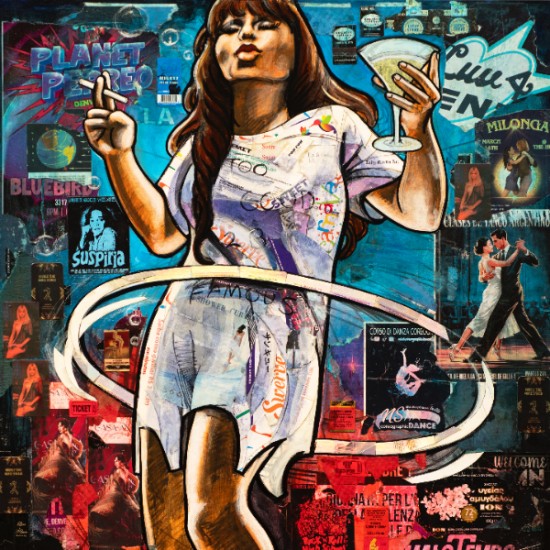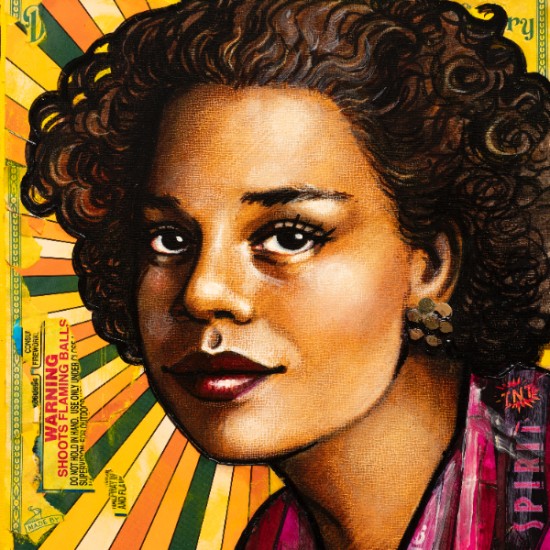Erin Currier
Umberto Saba
Mixed media: pen, marker, gouache on paper, Image: 10.5"h x 6"w, Frame: 16.5"h x 11.5"w, Item No. 21738,
Umberto Saba (1883–1957) was born in the city of Trieste, then part of the Austro-Hungarian Empire, and continued to live in Trieste for the greater part of his life. The child of a broken family—his father, who had converted to Judaism to marry, soon abandoned his wife—Saba attended the Imperial Academy of Commerce and Navigation in Trieste, and then moved for some years to Pisa, where he studied classical languages and archaeology. In 1909 he married Carolina Wölfler, also Jewish, and the subsequent year she gave birth to a daughter; a first book of poems, published under the name of Umberto Saba, also appeared that year. Saba’s marriage was at first troubled—his wife’s affair with a painter led to a brief separation—and the couple was poor, and for a few years they moved around Italy in the hopes of improving their fortunes. After the end of World War I, however, Saba bought a secondhand bookshop in Trieste—he called it La Libreria Antica e Moderna—and in the next decades he made a comfortable living as a bookdealer while working on Il Canzoniere, the book of poems he published in 1921 and would go on adding to for the rest of his life. During World War II, Saba and his family were forced to flee Trieste and go into hiding in Florence to avoid deportation by the Nazis. Though the postwar years brought him many prizes and widespread recognition as one of modern Italy’s greatest poets, Saba suffered from depression, which had plagued him all his life, and opium addiction. He died at seventy-four, within a year of his wife.
(New York Review of Books)
Erin Currier captures the likeness of Italian modernist poet and novelist Umberto Saba in this pen, marker, and gouache portrait. Depicted in his army uniform after being drafted in 1915, Saba’s serious, perhaps uncertain expression belies his melancholy history, a sentiment heightened by the choice of sepia tones for the composition. This portrait, a visual poem in and of itself, poignantly embodies Currier's masterful ability to capture the depth of human emotion, leaving a lasting impression on the viewer.








